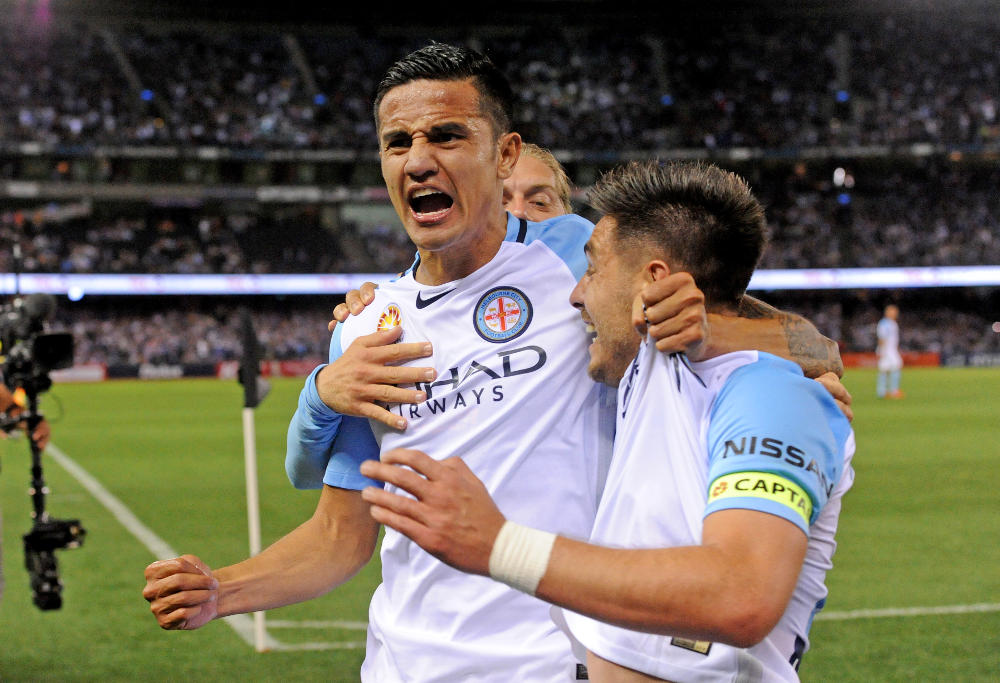Melbourne City and Geelong is a pairing that could blossom into football’s fairy tale romance.
City’s impressive growth since being taken over by Manchester City, is matched only by the growth in popularity of the world game in Geelong.
The Geelong region had 3,712 registered footballers in 2016. This is a healthy 29 per cent increase from 2,883 participants in 2014. A significant number of these players were from the junior ranks and in particular, the MiniRoos, a program designed for kids under-11.
Melbourne City’s membership numbers have increased from 7,307 in 2013-14 to 11,459 so far this year.
Melbourne Victory has had a major headstart and has already captured a large portion of the state’s football fans. South Melbourne recently unleashed a bid to join the A-League, and considering their strong history, they will take more than their fair share of fans.
Thus, it’s important Melbourne City broadens its horizons and looks beyond the state’s capital to continue their impressive growth.
According to its community profile, the population of the Greater Geelong region in 2016 is approximately 235,000. It is expected to grow to approximately 320,000 by 2036.
These are healthy numbers which suggest there is a large market for Melbourne City to tap into in terms of fans, as well as TV audiences, which are going to underpin the new A-League TV deal from 2017-18 onwards.
Melbourne City’s TV audience has increased by 35 per cent since last season, from 74,760 viewers to 100,750 per game. A population of 235,000 could significantly boost these numbers, especially considering Geelong does not have a prominent sports team over the spring and summer months to keep the locals occupied.
Having a club from the world game playing three or so games in the region during the AFL’s offseason would be great for the locals, and it might just be the tonic for football to impose itself in Geelong.
Melbourne Victory only play one token game in Geelong each year and probably haven’t captured the Geelong football audience as much as they would like too.
City could play three games in the region and make it their own. By offering affordable three-game membership packs to Geelong fans, it could make the locals feel like it is their club. 3,712 registered footballers could potentially extrapolate out to two or three times that number in terms of football fans when you add parents, spouses, and children.

Further to this, City could try and strike a deal with V/Line to offer free public transport for all members to go to Geelong based games, like the Western Sydney Wanderers, whose fans get free public transport to all home games.
The local tourism board could move for a sponsorship deal where Melbourne based City fans or opposing fans can make a weekend of it and holiday in the greater Geelong area, around City ‘home’ games in Geelong.
The Central Coast Mariners have recently linked up with Canberra to take A-League games to the nation’s capital, a move which will increase fan numbers and their TV audience.
The AFL has led the way in showing it is of great benefit for clubs to go beyond their geographical boundaries to attract fans.
AFL clubs Hawthorn and North Melbourne have led the way in attracting fans from alternative markets. Hawthorn has approximately 12 per cent of its 75,000-plus members based in Tasmania, while North Melbourne has 16 per cent of its 45,000 members in the apple isle.
The GWS Giants have more than 20 per cent of their 15,000-odd members based in Canberra where they play four home games a season. This move was designed to combat the fact the Sydney Swans had a significant headstart on the harbour city’s AFL fan market.
Based on FFA boss David Gallop’s desire for full-time licences to be handed out to areas with a population in the millions, Geelong isn’t equipped for its own club at this stage. Yet, the tens of thousands in the area can definitely boost an existing club like City.
A standalone team would have to rely solely on the Geelong market, which despite its growth in football terms, is probably not enough to support a team on its own all season round. So why not have a club that has multiple markets to tap into and hence keep up their fan-base and their corporate dollar?
City has a strong financial structure now, due to being owned by Manchester City.
The cumulative total of all its uniform sponsors is around $3.2 million annually. This is better than all other A-League clubs and even some AFL clubs. And there is no reason why that sort of money can’t be invested into Geelong football as well.
With superstars like Tim Cahill and Bruno Fornaroli banging in goals for the Geelong region, it would be a win-win for all.































































































